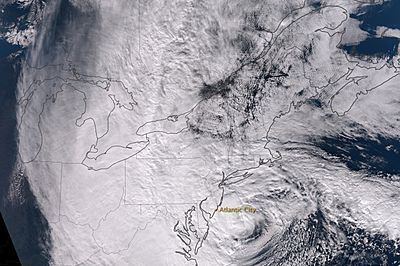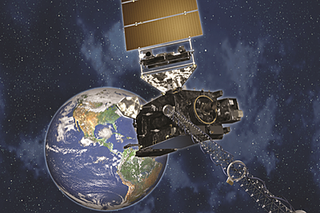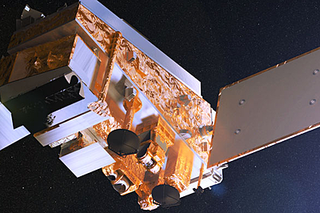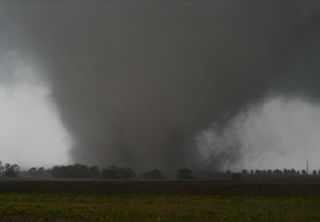
New Generation Satellites Shine on Weather Forecasting

This article was provided by AccuWeather.com.
The continuous improvement of weather forecasts and climate predictions is highly dependent on a new generation of weather satellites.
The high-tech satellites will give meteorologists and climatologists new and better tools to break down the atmospheric puzzle.
Computer modeling is one indispensable forecasting tool, and it is the quality of the data that is fed into the computer models that greatly impacts the accuracy of the models.
There are multiple computer models forecasters use. During a typical day, these models are run multiple times, utilizing classic data from buoys, land observations and weather balloons.
As computer models become more powerful, they have greater ability to access cutting-edge technology from the new generation of weather satellites.

Weather satellites consist of two types: geostationary and polar-orbiting.
Sign up for the Live Science daily newsletter now
Get the world’s most fascinating discoveries delivered straight to your inbox.
Geostationary (GOES) satellites circle the Earth near the equator and are in a fixed position relative to the ground. These satellites offer a valuable wide view of Earth from high above the surface.
Polar-orbiting satellites circle the Earth from one to over a dozen times per day, but they fly at lower altitude than the geostationary satellites. This lower altitude and northern (and southern) latitude exposure gives meteorologists high resolution data the geostationary craft cannot provide.
RELATED: Aemerican Weather Industry Fighting Fiscal Cliff Data from New Satellite Implemented in Record Time Exponential Changes in Weather Forecasting
The new generation of satellites beginning with the GOES R and the Joint Polar Satellite Systems (JPSS) incorporate devices to see through thick cloud cover and the ability to sense wind, temperature, pressure and moisture of not only the atmosphere, but over the land and sea surface. In addition to the weather, the equipment will be able to detect multiple climatological and environmental parameters.
Recent advanced warnings of damaging and life-threatening weather originating from improved forecasting tools include the tornado outbreaks this spring, the Drought of 2012 and Sandy.
Goes R is currently slated for launch in 2015 with several additional craft (S, T and U) planned to follow in subsequent years.
JPSS-1 is scheduled for launch in 2017 with JPSS-2 also planned during a later year.

SUOMI, a polar-orbiting satellite continuing some of the new technology, was launched in 2011. However, this craft could reach the end of its useful life, prior to the launch of JPSS-1.
Since the new and aging existing craft have an average useful life of approximately a handful of years, concerns have been raised for gaps in coverage and delays in scheduled launches. After all it is rocket science and the craft are exposed to the perils of space.
The concerns have increased in light of the fiscal cliff and potential budget cuts to the parent of the satellite programs: The National Oceanic and Atmospheric Administration (NOAA).
NOAA's new generation of satellites have been funded through the first quarter of 2013 due to the continuing resolution. This also allows NOAA to move funds from other programs, to keep the satellite construction on track for now. However, questions continue to arise as to what happens beyond this quarter and also what other NOAA programs and staffing may be affected as funds are shuffled around.
Other nations have and continue to build similar high-technology satellites, which would not only fill some of the gaps of failed or foiled NOAA craft but would also complement the operational systems. However, sharing of this information could be a problem in some situations due to political and military concerns. Hence, the need for a self-reliant U.S. system.
Gapless coverage of new-technology satellites is essential for United States weather and climatology forecasting to continue to move foreword.
AccuWeather.com. All rights reserved. More from AccuWeather.com.
The only sure thing about weather forecasts is that they’re wildly different all over the planet. Test your knowledge on the wild ranges in temperature, precipitation and more.
Extreme Weather Facts: Quiz Yourself













